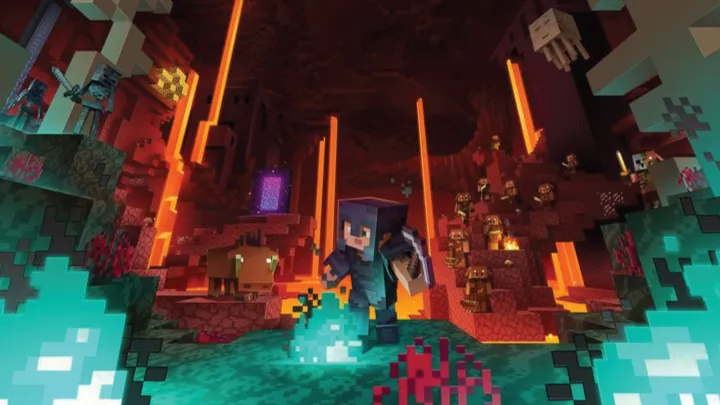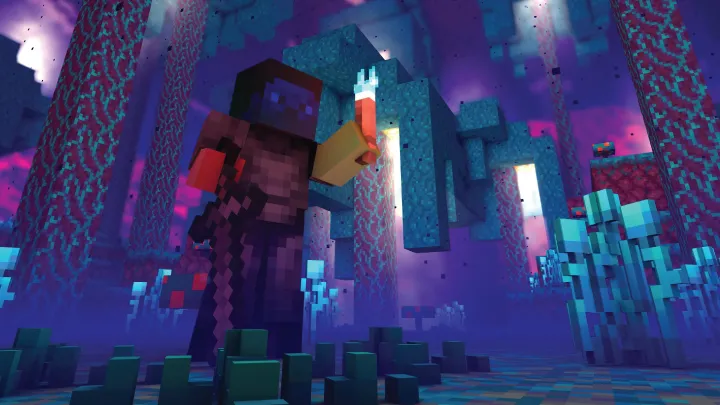Minecraft is a paradox. On the surface, it is a simple sandbox game built from blocks. Yet, beneath this seemingly straightforward facade lies a universe of unparalleled complexity, a rich tapestry of survival, exploration, and creative expression. To the novice, the world is a series of simple tasks: punch a tree, build a shelter, and avoid monsters. But to the true master, Minecraft is a delicate symphony of intricate systems—a canvas for automated farms, sprawling metropolises, and complex Redstone contraptions. This guide is your definitive blueprint for moving beyond mere survival and ascending to the realm of true mastery. We will delve into the nuanced mechanics, advanced strategies, and creative philosophies that transform a player into a veritable architect of digital reality.

Part 1: The Art of the First Night (Advanced Survival)
The first night is a right of passage, but a true expert plans far beyond a crude dirt hut. Mastery begins with a meticulous approach to resource acquisition and a long-term vision.
1. The Hyper-Efficient First Day:
A novice aims for wood and a crafting table. An expert prioritizes a multi-step sequence that ensures a sustainable foundation. Your immediate goals are:
- Obtain Iron: Skip the stone tools. Your primary objective is to find a cave or ravine to mine for iron. Iron tools are a quantum leap in efficiency, allowing for faster resource gathering and access to diamond ore.
- Secure a Food Source: Instead of hunting, which is time-consuming and inefficient, immediately find a village or plant seeds to create a small, sustainable farm. An expert establishes a renewable food source before day two.
- Build a Permanent Base: Your first shelter is not temporary. It's the core of your future operations. Position it near a variety of biomes for easy access to different resources (e.g., a plains biome for building, a forest for wood, and a mountain for stone).
2. The Science of Resource Management:
Beyond the basics of mining, an expert understands the intricate mechanics of resource management.
- Enchantment Efficiency: Prioritize specific enchantments for your tools. A pickaxe with Fortune III is invaluable for tripling ore yields, while a shovel with Silk Touch allows you to gather blocks like grass and mycelium, enabling advanced building projects.
- Renewable Resource Farms: The true measure of a master is their ability to automate resource generation. Learn to build farms for infinite iron (Iron Golem farms), infinite cobblestone (Cobblestone Generators), and infinite wood (Tree Farms). These are the building blocks of any large-scale project.
- The Ultimate Inventory: Your inventory is a strategic tool. Always carry a balance of combat gear, a stack of wood for building, food, and a water bucket for emergency falls and fire extinguishing.
Part 2: The Geographer's Compass (Advanced Exploration)
The world of Minecraft is vast, and a master knows how to navigate it with precision and purpose.
1. Dimensional Telemetry:
- The Nether Highway: The Nether is not just a fiery hellscape; it's a superhighway. Due to its unique coordinate system (every block moved in the Nether is equivalent to eight blocks in the Overworld), an expert builds a network of tunnels in the Nether to connect distant locations in the Overworld, drastically reducing travel time.
- F3 Debug Screen: The F3 debug screen is your most powerful tool. It provides real-time information on your coordinates (XYZ), your facing direction, and your biome. Use it to navigate precisely, find buried treasure, or locate your base after getting lost.
2. Structured Exploration:
- Finding the Stronghold: The path to the endgame requires finding the End Portal, which is located in a Stronghold. An expert doesn't simply throw an Eye of Ender and hope for the best. They throw multiple Eyes from different locations to triangulate the exact position of the Stronghold, minimizing the number of Eyes used and ensuring a direct route.
- Biome Hopping: Each biome offers unique resources. An expert strategically explores a variety of biomes, gathering all the necessary resources for future projects, from lush jungle wood for a greenhouse to desert sand for glass.
Part 3: The Architect's Manifesto (Masterful Building and Redstone)
Minecraft is a canvas for creativity, and the expert's creations stand apart not just in scale but in their adherence to core design principles and a mastery of the game's electrical system.
1. Beyond the Box (Architectural Principles):
- Depth and Texture: A novice builds a flat wall. An expert adds depth by recessing windows, adding columns, and creating intricate patterns with different block types (e.g., using cobblestone walls and stairs to create a detailed support structure).
- Lighting and Atmosphere: Lighting is crucial for both aesthetics and safety. An expert uses light sources not just to prevent mob spawning but to create a specific mood. They use hidden light sources like glowstone or sea lanterns to illuminate a space without disrupting the design.
- Terraforming: The landscape is not a given. A master terraforms the environment to suit their vision, carving out mountains, creating artificial lakes, or flattening an entire area for a city.
2. The Redstone Engineer:
Redstone is the lifeblood of advanced Minecraft. It is the game's equivalent of electricity, allowing for the creation of complex machinery.
- The Fundamental Components:
- Redstone Dust: The "wire" that carries the signal.
- Redstone Torch: A constant power source.
- Repeater: Repeats a Redstone signal over a long distance and creates a delay.
- Comparator: Compares the strength of Redstone signals and can be used to measure the content of a container.
- Pistons and Sticky Pistons: Push and pull blocks. The basis for all hidden doors and automated systems.
- Automated Systems: The ultimate goal of a Redstone master is to automate. Learn to build:
- Automatic Farms: Use pistons and dispensers to automatically harvest crops or trees.
- Item Sorters: Use hoppers and comparators to automatically sort items into chests.
- Hidden Doors and Traps: Use pistons and tripwires to create secret entrances and elaborate defenses.

Part 4: The Ultimate Endgame and Beyond
Completing the game's main objectives is just the beginning. The true endgame is a self-defined journey of creation, exploration, and challenge.
1. Conquering the Bosses:
- The Ender Dragon: While a simple battle for an expert, the real challenge is in the preparation. Gather the right enchantments and a powerful bow, and learn to strategically destroy the crystals to prevent the Dragon from healing.
- The Wither: This is a formidable foe. The expert knows to fight the Wither in an enclosed space, far from their base, to prevent it from destroying their creations. Use a series of potions and a powerful enchanted sword to defeat it quickly.
2. The Creative Endeavor:
- Map Making: Create your own custom adventure maps with intricate storylines, puzzles, and challenges.
- Server Management: Host your own server for a community, creating a living, breathing world with its own rules and history.
- Modding and Resource Packs: Don't just play the game; change it. Explore the world of mods to add new features, and use custom resource packs to change the look and feel of your world entirely.
Conclusion: From Player to Master
Minecraft is not about following a linear path; it is about embracing the systems and using them to create your own unique journey. The master builder understands that a simple block of cobblestone is not just a building material—it's the first step in a complex Redstone circuit. The skilled explorer sees a biome not as a landscape, but as a collection of potential resources. By mastering these core disciplines—survival, exploration, and creation—you will transcend the simple act of playing and become a true creator, an architect of your own digital destiny.

















